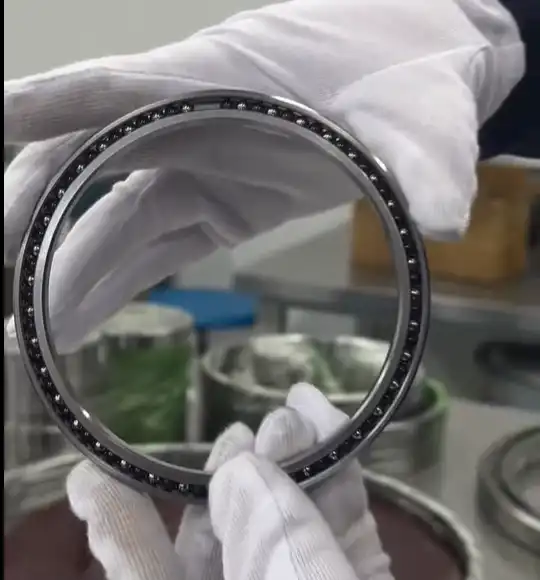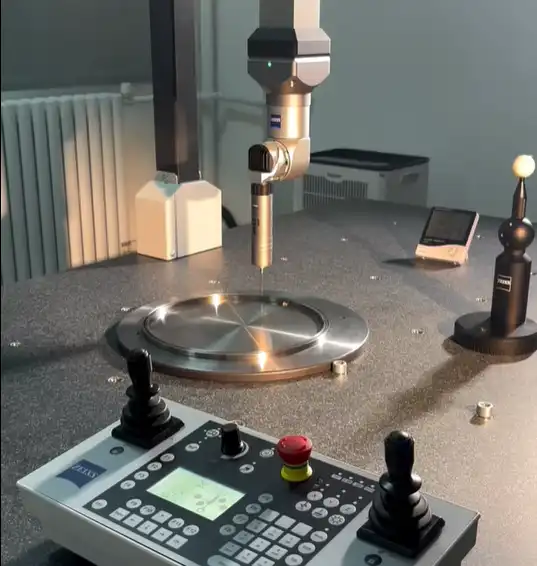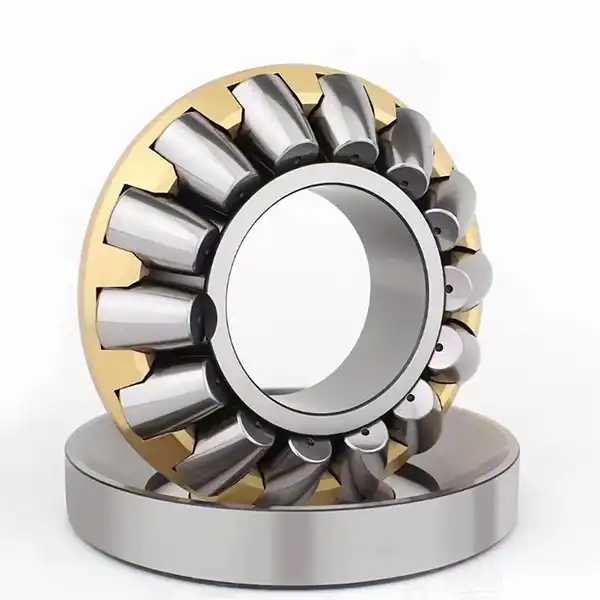Ultra-Thin Section Bearings: The Ultimate Guide to Compact, High-Precision Solutions
I. Product Overview
Ultra-thin section bearings (also called equal-section thin-wall bearings) feature uniformly thin inner and outer rings with a low height-to-width ratio (typically ≤0.25). Their lightweight and space-saving design makes them ideal for advanced applications. Common types include:
Thin-Section Deep Groove Ball Bearings: Handle radial and axial loads
Thin-Section Angular Contact Ball Bearings: Optimized for combined loads and high-precision requirements
Thin-Section Four-Point Contact Ball Bearings: Support bidirectional axial forces
Thin-Section Crossed Roller Bearings: Deliver high rigidity for precision rotation applications
Materials: High-carbon chromium steel (e.g., GCr15), stainless steel (e.g., G95Cr18), or ceramic. Surface treatments like silver plating or phosphating enhance performance.

II. Key Applications
Industrial Robots: Joints and rotary units (space/weight savings)
Aerospace: Satellite antennas, gyroscopes (lightweight demands)
Medical Equipment: CT scanners, surgical robots (high precision, low friction)
Semiconductor Machinery: Wafer handling arms (cleanroom compatibility)
Collaborative Robots: Require compactness and flexibility
Precision Instruments: Optical platforms, metrology devices

III. Advantages Over Standard Bearings
Feature | Ultra-Thin Section Bearings | Traditional Bearings |
Structure | Uniform wall thickness, low profile | Uneven ring thickness, bulkier |
Weight | 20%-40% lighter | Heavier |
Space Efficiency | Compact design saves space | Require more installation room |
Precision | P4/P5 grade (high precision) | Standard grade (e.g., P0) |
Rigidity | Enhanced (e.g., crossed roller types) | Depends on size, often lower |
Cost | Higher unit cost, lower system cost | Lower unit cost, needs extra support |
IV. Critical Performance Factors
1. Material & Heat Treatment
Steel purity and heat treatment (quenching/tempering) affect fatigue life.
Stainless steel bearings require corrosion resistance/strength balance.
2. Manufacturing Precision
Raceway roundness (≤2μm), surface roughness (Ra≤0.1μm) ensure smooth operation.
3. Clearance & Preload
Excessive preload causes overheating; insufficient preload reduces rigidity (dynamic adjustment needed).
4. Lubrication
Thin walls dissipate heat poorly; use low-volatility grease (e.g., PFPE) or oil mist lubrication.
5. Installation Fit
Avoid excessive interference fits (recommended: H7/g6 tolerance).
6. Load Characteristics
For shock loads, reinforced cages (e.g., phenolic resin/monolithic metal) are essential.
7. Environmental Conditions
Vacuum environments: Use non-outgassing lubricants.
Corrosive settings: Apply coatings (e.g., nickel plating).
V. Selection Guide
High-Speed Applications: Angular contact ball bearings with oil-air lubrication.
Heavy Load/Low Speed: Crossed roller bearings perform best.
Extreme Environments: Ceramic balls + stainless steel (e.g., Si3N4+G95Cr18).
Engineered for precision and reliability, ultra-thin section bearings elevate performance in advanced systems—when properly selected and maintained.
YOU MAY LIKE
 VIEW MORESingle Thrust Ball Bearing
VIEW MORESingle Thrust Ball Bearing VIEW MOREDeep Groove Ball Bearing
VIEW MOREDeep Groove Ball Bearing VIEW MOREThree-Row Cylindrical Roller Slewing Bearing
VIEW MOREThree-Row Cylindrical Roller Slewing Bearing VIEW MORE4 Point Contact Ball Bearing
VIEW MORE4 Point Contact Ball Bearing VIEW MORESlewing Ring Bearing With External Gear
VIEW MORESlewing Ring Bearing With External Gear VIEW MOREFour Point Contact Ball Slewing Bearing
VIEW MOREFour Point Contact Ball Slewing Bearing VIEW MORECrossed Roller Bearing
VIEW MORECrossed Roller Bearing VIEW MORESpherical Roller Thrust Bearings
VIEW MORESpherical Roller Thrust Bearings

